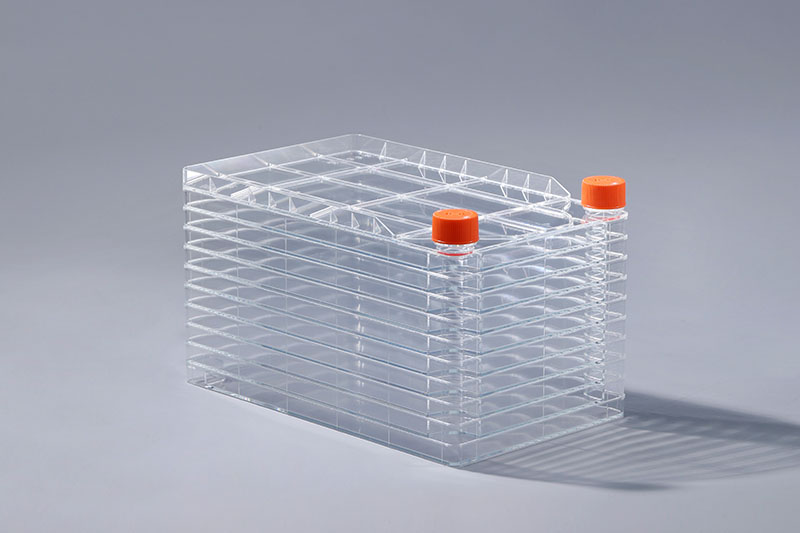Основными компонентами клеточной мембраны и адгезии между клетками являются липопротеины и полисахариды. Трипсин в трипсине может превращать белки в пептоны, а липаза поджелудочной железы может разлагать жир на глицерин и жирные кислоты, тем самым разделяя клетки. Клетки лизируются. Функция раствора для переваривания в основном заключается в гидролизе межклеточных белков (таких как внеклеточный матрикс), диспергировании ткани или прикрепленных клеток в отдельные клетки и приготовлении клеточной суспензии для дальнейших экспериментов. Пищеварительные ферменты играют важную роль. в культуре клеточных фабрик, но следует отметить, что разные клетки по-разному реагируют на панкреатические ферменты. При значении рН 8,0 и температуре 37 °С раствор панкреатического фермента оказывает наиболее сильное действие. , концентрацию, температуру и время следует тщательно контролировать при использовании, чтобы избежать чрезмерного переваривания, влияющего на прилипание и рост клеток.представляет собой расходный материал для многослойных клеточных культур, подходящий для крупномасштабных клеточных культур. В дополнение к специфической среде для клеточной культуры пищеварительный сок также является важным раствором. в суспензию отдельных клеток), а также в субкультуре, для расщепления и диспергирования прикрепленных растущих клеток следует использовать раствор для переваривания клеток тканей. Раствор для переваривания, используемый в технологии клеточных фабрик, в основном состоит из трипсина, ЭДТА и т. д.
In the in vitro culture of tissue cells and the dispersion of tissue cells in primary cell culture (the tissue block is prepared into a single cell suspension) as well as in subculture, the digestion and dispersion of adherent growing cells should use tissue cell digestion solution. The digestion solution used in cell factory culture technology is mainly trypsin, EDTA, etc.
The main components of the cell membrane and the adhesion between cells are lipoproteins and polysaccharides. Trypsin in trypsin can convert proteins into peptones, and pancreatic lipase can decompose fat into glycerol and fatty acids, thereby separating cells. Cells are lysed. The function of the digestion solution is mainly to hydrolyze the intercellular proteins (such as extracellular matrix), to disperse the tissue or adherent cells into single cells, and to make a cell suspension for further experiments.
Digestive enzymes play an important role in the culture of cell factories, but it should be noted that different cells have different responses to pancreatic enzymes. When the pH value is 8.0 and the temperature is 37 °C, the pancreatic enzyme solution has the strongest effect. , the concentration, temperature and time should be well controlled when using, so as to avoid excessive digestion affecting the adherence and growth of cells.
The FAI climbed 5.9 percent year-on-year in the first 11 months of 2018, quickening from the 5.7-percent growth in Jan-Oct, the National Bureau of Statistics (NBS) said Friday in an online statement.
The key indicator of investment, dubbed a major growth driver, hit the bottom in August and has since started to rebound steadily.
In the face of emerging economic challenges home and abroad, China has stepped up efforts to stabilize investment, in particular rolling out measures to motivate private investors and channel funds into infrastructure.
Friday's data showed private investment, accounting for more than 60 percent of the total FAI, expanded by a brisk 8.7 percent.
NBS spokesperson Mao Shengyong said funds into weak economic links registered rapid increases as investment in environmental protection and agriculture jumped 42 percent and 12.5 percent respectively, much faster than the average.
In breakdown, investment in high-tech and equipment manufacturing remained vigorous with 16.1-percent and 11.6-percent increases respectively in the first 11 months. Infrastructure investment gained 3.7 percent, staying flat. Investment in property development rose 9.7 percent, also unchanged.
 English
English



















































